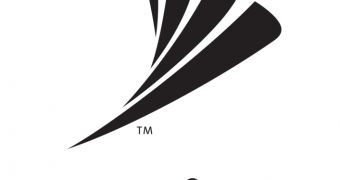Sprint Nextel has settled September for the launch of its first commercial WiMax service in Baltimore, announced Sprint CEO Dan Hesse during a speech at the NxtComm trade show on Wednesday. Chicago and Washington are also targeted for the deployment of two WiMax services before the end of this year, said Hesse. Yet, no specific date for these deployments has been revealed.
Sprint has already delayed a few times the deployment of the much-anticipated WiMax service. Previously, the company announced the launch of the service during the first half of the year. Earlier, no specific time frame for the availability of the service was announced. Starting with the end of last year, the company has been testing the mobile WiMax service in the Chicago and Washington-Baltimore areas to allow download speeds ranging from 2 Mbps to 4 Mbps.
The company announced that the delays are due to technical problems related to backhauling or connecting traffic back to Sprint's core network, yet there are some voices that say the real issues are coming from the financial and management area of the company.
Last month, Sprint announced that it would turn around its WiMax assets and, together with another service provider, Clearwire, will begin the building of a nationwide WiMax network, as it was trying to relieve its shareholders and refocus the company on its core cell phone business. Clearwire has already made available a fixed WiMax service in different areas of the U.S., and now it is testing a mobile WiMax service in Portland, Ore.
The joint venture will be called Clearwire, and Sprint will hold the majority. The team has already been taking investments from cable operators Comcast and Time Warner Cable, not to mention big tech companies like Intel and Google, which will be involved, too.
According to Hesse, Sprint Clearwire venture has a minimum two-year advantage in front of other wireless operators planning to build 4G wireless networks. Since the existing 2G and 3G networks seem to run out of capacity for data services, the two-year ahead represents a key differentiator.
"As fast as (3G networks) are today, nothing will define wireless broadband like WiMax," Hesse said. "The 4G technology is wireless at rocket speeds. And Sprint could have a two-year head start in providing broadband wirelessly at landline speeds."
Hesse added that the new WiMax could be used to provide Internet connectivity to large numbers of consumer electronics devices, like cameras, or to bring new services to cars, which would allow parents to download videos while traveling by car, so that kids could enjoy them on the back seat.
Experts in the WiMax area say that Sprint should speed up as much as possible the deployment of a commercial WiMax service.
"Nothing beats proof of concept," said Paul Kapustka, founder and editor of Sidecut Reports, which has recently published a report on the WiMax market. "It's great to talk about this stuff, but seeing a network in action goes a long way. If Sprint wasn't able to get a commercial deployment out before the end of the year, then there would have been real questions about the viability."
WiMax's future is still under question whether Sprint will manage to hit the September deadline or not. Some say that the WiMax will prove to be only a niche market, even with big technology companies like Intel or Motorola backing it up. Major cell phone companies including AT&T, Verizon Wireless, as well as Vodafone, the world's largest cell phone operator, say that they will build their own 4G wireless networks by using a competing technology known as Long Term Evolution, or LTE.

 14 DAY TRIAL //
14 DAY TRIAL //